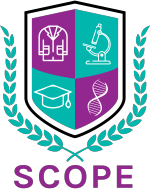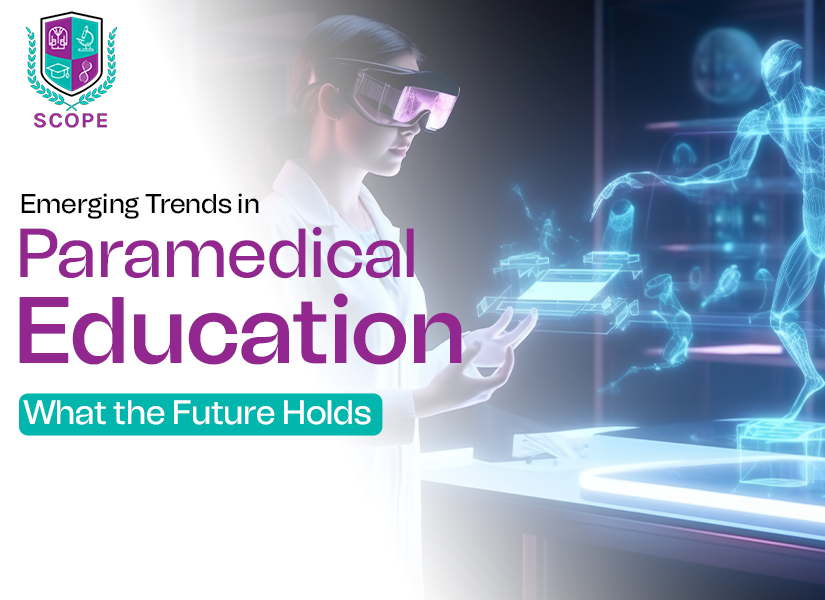You’ll be hearing new trends in the healthcare industry every day that passes. That’s a good place for society to be. But have paramedical education trends caught up with the industry’s trends? Because the workforce keeps changing, it isn’t the same people assisting the professionals—they grow and move up the hierarchy. This is why it becomes very important that paramedical education prepares students not only for today’s deficiencies but also for tomorrow’s innovations.
And this is also in action—paramedic education has undergone a major transformation. Periodic curriculum updates have shown exceptional advancements in paramedical studies that lay the right foundation for building professional assistants. This blog widely covers the trend in paramedical education and how that’s shaping the next generation of medical personnel.
Paramedical Education Trends in 2025 & Beyond
Simulation Labs & Virtual Reality Training
Ever thought how it would feel training with the best professionals and equipment in the world? That’s no more a mere dream but a reality. Advanced technologies like virtual reality (VR), augmented reality (AR), and extended reality (XR) help students practice real-life medical situations like those of trauma cases and surgical assistance. This ensures test subjects are conservatively used while still developing critical thinking in complex procedures, building medical professionals with the required muscle memory.
Hybrid Learning Models
While the pandemic had disgraceful after-effects for society at large, we have to give credit for the innovations it provided us with. Online learning was one of such innovations. While the world has opened up after the pandemic lockdown, the benefits of online learning are still being extracted. Institutes teach the theoretical part through online methods, and practical training required for hands-on experience takes place offline. This method reduces the infrastructure usage for sedentary conventional education and focuses highly on what matters the most—working your hands around the paramedic tasks.
AI & Data in Healthcare Training
Innovative treatment methods have always been based on improved data collection and interpretation. This necessitates that future paramedic professionals also learn how to use the latest technologies, like artificial intelligence (AI), for data analysis to develop insights that have it in themselves to revolutionize the healthcare industry for good. Not just modern tech but paramedic students are also taught to understand wearable device data for further treatment processes.
Soft Skills & Patient Communication
While such skills are not very new in nature, their wide adoption is quite recent. The industry has come to recognize that skills like empathy, teamwork, and communication are highly effective in the treatment procedure, and so has the curriculum. Modern courses include bedside manner training, roleplays for difficult patient scenarios, and communication with families under stress since these are very integral parts of the job. The focus is on making students patient-ready, not just hospital-ready.
What are the New-Age Careers for Paramedical Students?
The whole curriculum shift has happened because of the simple fact that the industry has produced a significant demand for new roles. Let’s discuss a few of them.
- Telehealth Assistants: They are doctors available for you virtually through technology, where they manage the patient data remotely and are accessible from anywhere in the world.
- Clinical Data Analyst: Recognize those people interpreting large amounts of data in tech companies? Now, there are clinical professionals who track treatment results, monitor patient outcomes, and improve care through insights.
- Digital Radiology Technician: No more patients suffering from human measurement errors because professionals can now acquire quick and accurate diagnoses with AI.
- Health Technology Coordinator: Professionals bridging the gap between medical teams and information technology (IT).
- Emergency AI Technician: Paramedic professionals who can provide both first response immediate care and navigate AI medical tools.
Conclusion
Here’s your four-word mantra to become successful if you’re a newbie entering the paramedic field: “adaptability, technology, communication & specialization.” India’s paramedic sector is growing rapidly, and so is the education associated with it. The sector holds great future opportunities, with new trends and technologies being introduced daily. However, tech-enabled personnel must take over these positions since they fulfill some prerequisites. The future of healthcare training is bright, and anyone entering the paramedic sector is signing up for a future-proof career. If you think you are even slightly interested in healthcare, paramedical education is your best choice.

